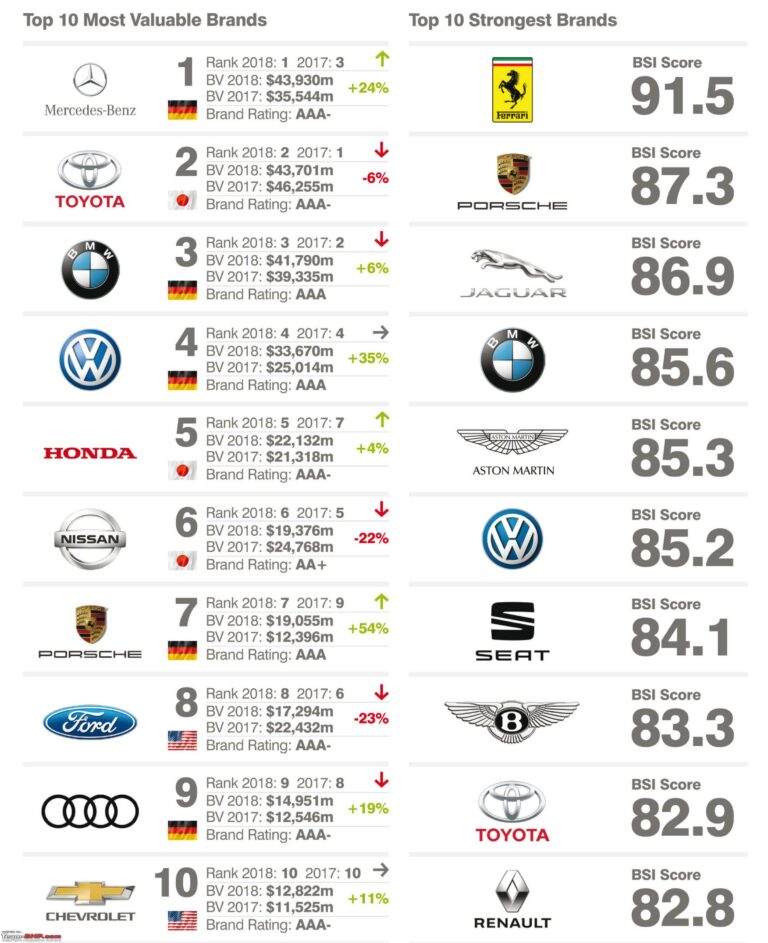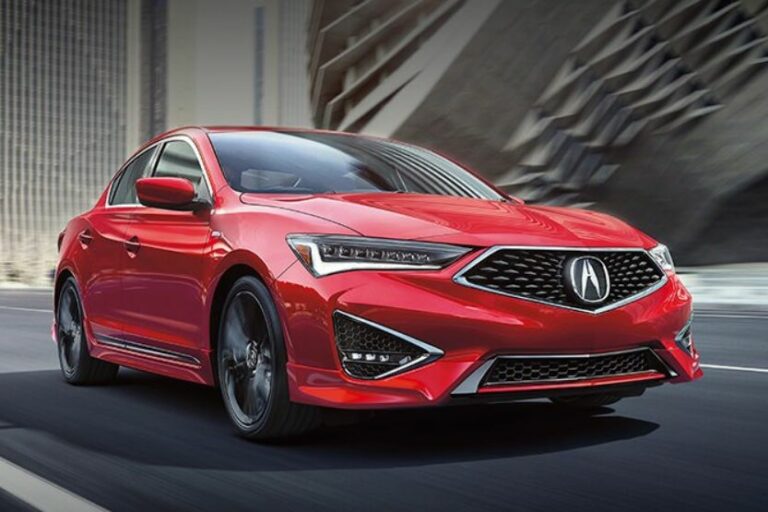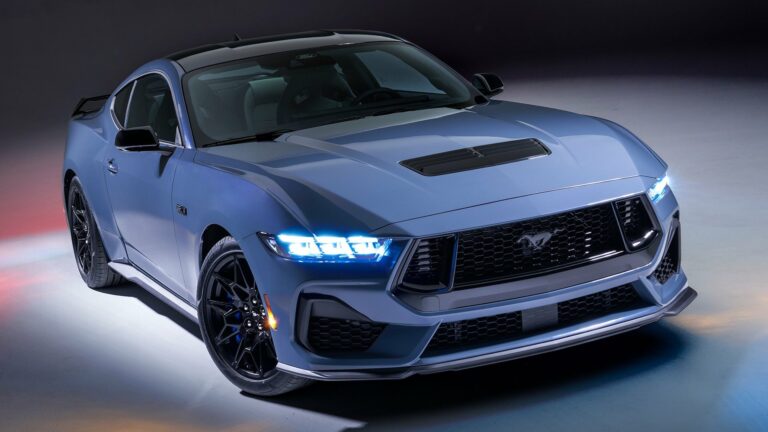All GM Car Brands: A Comprehensive Guide to General Motors’ Diverse Portfolio
All GM Car Brands: A Comprehensive Guide to General Motors’ Diverse Portfolio cars.truckstrend.com
General Motors (GM) stands as one of the automotive industry’s titans, a global powerhouse with a storied history dating back to 1908. Far from being a monolithic entity, GM’s strength and resilience lie in its diverse portfolio of car brands, each meticulously crafted to cater to specific market segments, consumer needs, and global aspirations. From rugged work trucks to opulent luxury sedans and cutting-edge electric vehicles, understanding "All GM Car Brands" is key to appreciating the company’s strategic depth and its enduring impact on the automotive landscape. This comprehensive guide will delve into the current active brands under the GM umbrella, exploring their unique identities, target audiences, and their role in shaping the future of mobility.
The Foundation of an Empire: Understanding GM’s Brand Strategy
All GM Car Brands: A Comprehensive Guide to General Motors’ Diverse Portfolio
At its core, GM’s multi-brand strategy is designed to capture market share across a vast spectrum of demographics and price points. Each brand operates with a distinct identity, often sharing underlying platforms and technologies to achieve economies of scale, while presenting a unique face to the consumer. This allows GM to compete effectively against a wide array of rivals, from budget-friendly manufacturers to high-end luxury marques, without diluting the distinct appeal of any single brand.
Historically, GM has owned dozens of brands, some of which have been discontinued or sold off due to market shifts, economic pressures, or strategic realignments. However, its current active portfolio remains robust and globally significant, primarily centered around its four core North American brands, with an increasing focus on electric vehicle integration across the board.
The Core American Pillars: Chevrolet, GMC, Cadillac, and Buick
These four brands represent the bedrock of GM’s operations, each serving a unique purpose and commanding a loyal following.
1. Chevrolet: The Everyday Innovator and American Icon
Primary Focus: Mass-market appeal, value, reliability, and broad model diversity.
Key Vehicle Types: Full range including sedans, SUVs, crossovers, trucks, performance cars, and EVs.
Target Audience: Families, first-time buyers, small businesses, performance enthusiasts, and value-conscious consumers.

Chevrolet, often affectionately known as "Chevy," is GM’s flagship brand and its volume leader. For over a century, Chevrolet has been synonymous with American motoring, offering a vehicle for nearly every need and budget. From the utilitarian strength of the Silverado pickup truck, the family-friendly versatility of the Equinox and Traverse SUVs, to the exhilarating performance of the legendary Corvette and Camaro, Chevrolet embodies accessibility and broad appeal. In recent years, Chevrolet has also been at the forefront of GM’s electrification efforts, with popular models like the Bolt EV and the upcoming Silverado EV and Blazer EV signaling a strong commitment to sustainable mobility. Its brand identity is built on dependability, practical innovation, and a strong sense of community.
2. GMC: Professional Grade Utility and Premium Capability
Primary Focus: Upscale trucks, SUVs, and professional-grade utility vehicles.
Key Vehicle Types: Trucks (light-duty and heavy-duty), full-size SUVs, and mid-size SUVs.
Target Audience: Contractors, adventurers, outdoors enthusiasts, and those seeking premium utility and rugged sophistication.
GMC, or "General Motors Truck Company," positions itself as the "Professional Grade" alternative within the GM lineup. While sharing platforms with many Chevrolet models (e.g., Silverado/Sierra, Tahoe/Yukon, Equinox/Terrain), GMC vehicles typically offer more premium styling, higher-quality interior materials, and exclusive features. This allows GM to target consumers who desire the robust capability of a truck or SUV but seek a more refined and upscale experience without stepping into full luxury territory. The Denali sub-brand, in particular, represents the pinnacle of GMC’s offerings, providing luxury-level amenities and design. The recent reintroduction of the Hummer as an all-electric sub-brand under GMC further solidifies its commitment to high-performance, premium utility, pushing the boundaries of electric truck and SUV capabilities.
3. Cadillac: The Art of American Luxury and Innovation
Primary Focus: Luxury vehicles, advanced technology, performance, and sophisticated design.
Key Vehicle Types: Luxury sedans, performance sedans, full-size luxury SUVs, and luxury EVs.
Target Audience: Affluent buyers, technology enthusiasts, luxury seekers, and those who appreciate bold design and powerful performance.
Cadillac has long been GM’s aspirational luxury brand, known for its iconic designs, powerful engines, and pioneering technology. After a period of redefining its identity, Cadillac has successfully re-established itself as a formidable competitor in the global luxury market. Its current lineup blends athletic performance (CT4-V Blackwing, CT5-V Blackwing) with opulent comfort (Escalade, XT5, XT6). Cadillac is also leading GM’s charge into the luxury EV segment with the stunning Lyriq SUV and the ultra-luxury Celestiq, showcasing cutting-edge Ultium battery technology and a futuristic design language. Cadillac represents the pinnacle of GM’s engineering and design capabilities, aiming to deliver a distinctively American luxury experience.
4. Buick: Accessible Luxury and Quiet Comfort
Primary Focus: Accessible luxury, comfortable rides, quiet interiors, and a strong focus on SUVs/crossovers.
Key Vehicle Types: Compact, mid-size, and full-size SUVs/crossovers.
Target Audience: Mature buyers, families seeking comfortable and stylish transportation, and consumers who prioritize quietness and refinement without the high price tag of traditional luxury brands.
Buick occupies a unique niche within the GM portfolio, often described as "affordable luxury" or "premium mainstream." While its presence in the North American market has streamlined to an SUV-only lineup, Buick remains immensely popular in China, where it holds significant market share and offers a broader range of models. In North America, Buick vehicles are known for their serene cabin environments, smooth rides, and elegant styling. They appeal to buyers who appreciate comfort, quality materials, and modern features, but prefer a more understated approach to luxury than Cadillac, or perhaps a more refined experience than a typical Chevrolet. Models like the Encore GX, Envision, and Enclave embody Buick’s commitment to quiet tuning and sophisticated design, making it an ideal choice for those seeking a premium feel without the premium price tag.
Global Footprint and the Past: Acknowledging GM’s Evolution
While the four brands above form the core of GM’s current strategy, it’s important to acknowledge its historical breadth and global reach. GM has, over its long history, owned and operated numerous other brands, including:
- Discontinued Brands: Pontiac, Oldsmobile, Saturn, Hummer (original iteration), Geo.
- Divested Brands: Opel and Vauxhall (sold to PSA Group, now Stellantis), Holden (phased out in Australia/New Zealand), Saab (sold).
These strategic divestments and discontinuations allowed GM to streamline its operations, focus resources on its most profitable and promising brands, and adapt to changing market demands. The revival of Hummer as an all-electric sub-brand under GMC is a testament to GM’s willingness to innovate and repurpose heritage names for future challenges.
The Electric Future: A Unified Vision for GM’s Brands
A significant aspect of "All GM Car Brands" in the modern era is their collective pivot towards an all-electric future. GM has committed to an "all-electric future," investing heavily in its Ultium battery and platform technology. This modular architecture allows GM’s diverse brands to share core EV components while retaining their unique brand identities and performance characteristics.
- Chevrolet: Leading with accessible EVs like the Bolt EV/EUV, and upcoming Silverado EV, Blazer EV, and Equinox EV.
- GMC: Showcasing extreme capability with the Hummer EV Pickup and SUV.
- Cadillac: Defining luxury EVs with the Lyriq and Celestiq.
- Buick: Expected to transition its entire lineup to electric vehicles by the end of the decade, starting with the Electra concept.
This unified EV strategy ensures that each GM brand will continue to offer compelling choices to its target demographic, regardless of powertrain, reinforcing the company’s commitment to innovation and sustainability.
Important Considerations When Choosing a GM Brand/Vehicle
Navigating the vast array of GM vehicles can be exciting. Here are some key considerations to help you make an informed decision:
- Define Your Needs: What do you primarily need the vehicle for? Daily commuting, family transport, heavy hauling, off-road adventures, or a luxurious experience?
- Budget & Value: GM brands span a wide price range. Consider not just the purchase price, but also insurance, fuel/charging costs, and potential resale value.
- Features & Technology: Each brand and model offers varying levels of infotainment, safety features (e.g., Super Cruise), and driver-assist technologies. Research what’s available and what’s important to you.
- Performance & Efficiency: Evaluate engine options (gasoline, diesel, electric) and their respective performance metrics and fuel economy/range.
- Brand Perception: While practicalities are key, the emotional connection and perception of a brand can also play a role in your choice. Do you value the rugged utility of GMC, the broad appeal of Chevrolet, the quiet comfort of Buick, or the cutting-edge luxury of Cadillac?
- Dealership Experience: While GM operates under a single umbrella, individual dealerships can vary. Consider the local dealership’s reputation for sales and service.
Practical Advice and Actionable Insights
- Research Beyond the Brand: While understanding brand identity is crucial, dive into specific models within your preferred brand. A Chevrolet Tahoe is very different from a Chevrolet Corvette.
- Compare Within GM: Don’t hesitate to cross-shop between GM brands. A fully loaded Chevrolet Silverado might overlap in price and features with a base GMC Sierra, or a top-trim Buick Envision with a base Cadillac XT4.
- Test Drive Extensively: The best way to understand the subtle differences in ride quality, interior feel, and driving dynamics between brands (or even models within the same brand) is to test drive them.
- Explore Certified Pre-Owned (CPO): GM offers a robust CPO program, providing warranty benefits and rigorous inspections on used vehicles, which can be a great value proposition for any of its brands.
- Leverage GM’s Ecosystem: Take advantage of GM’s connected services like OnStar, MyGM Rewards, and the MyChevrolet/MyGMC/MyCadillac/MyBuick apps for vehicle management, remote features, and more.
Overview of Current GM Car Brands
Here’s a table summarizing the current primary GM car brands and their typical characteristics:
| Brand Name | Primary Focus / Market Position | Key Vehicle Types (Current) | Typical Price Tier (General) | Target Audience (General) | Notable Models (Examples) |
|---|---|---|---|---|---|
| Chevrolet | Mass-market, value, broad appeal | Sedans, SUVs, Trucks, EVs, Performance Cars | Affordable to Mid-Range | Families, Value-Seekers, Enthusiasts | Silverado, Equinox, Tahoe, Corvette, Bolt EV |
| GMC | Professional-grade utility, premium trucks/SUVs | Trucks, SUVs, Hummer EVs | Mid-Range to Premium | Contractors, Adventurers, Those seeking refined utility | Sierra, Yukon, Acadia, Hummer EV |
| Cadillac | Luxury, performance, advanced technology | Luxury Sedans, Luxury SUVs, Luxury EVs | Premium to Luxury | Affluent Buyers, Tech-Savvy, Status-Conscious | Escalade, XT5, CT5, Lyriq EV |
| Buick | Accessible luxury, quiet comfort, SUVs | Compact/Mid-size/Full-size SUVs | Mid-Range Premium | Mature Buyers, Comfort-Seekers, Value-Luxury | Encore GX, Envision, Enclave |
Note: Price tiers are general and can vary significantly based on trim level, options, and regional market conditions.
Frequently Asked Questions (FAQ)
Q1: How many car brands does GM currently own?
A1: General Motors currently operates four primary active car brands in North America: Chevrolet, GMC, Cadillac, and Buick. Globally, it also has a strong presence in China with brands like Baojun and Wuling (through joint ventures), and a focus on its core brands elsewhere.
Q2: What happened to brands like Pontiac, Oldsmobile, and Saturn?
A2: These brands were discontinued by GM as part of a restructuring effort during the 2008-2009 financial crisis. The decision was made to streamline operations, reduce redundancy, and focus resources on the most profitable and strategically important brands.
Q3: Is Hummer a separate brand again?
A3: No, Hummer has been resurrected as an all-electric "super-truck" sub-brand under GMC. It is not a standalone brand but operates as a premium, high-performance electric vehicle line within the GMC portfolio.
Q4: Which GM brand is the most luxurious?
A4: Cadillac is GM’s dedicated luxury brand, offering the highest level of luxury, technology, and performance across its lineup, culminating in vehicles like the Escalade and the ultra-luxury Celestiq.
Q5: Are GM cars reliable?
A5: GM vehicles generally have a good reputation for reliability, consistently ranking well in various industry studies for initial quality and long-term dependability. Reliability can vary by specific model and maintenance history, but overall, GM aims for high standards across its brands.
Q6: What is GM’s strategy for electric vehicles?
A6: GM is committed to an "all-electric future," investing heavily in its modular Ultium battery and platform technology. This strategy aims to electrify its core brands (Chevrolet, GMC, Cadillac, Buick) across various segments, from affordable EVs to luxury and performance electric vehicles, with a goal of selling only zero-emissions vehicles by 2035.
Conclusion
The landscape of "All GM Car Brands" is a dynamic testament to General Motors’ century-plus journey in the automotive world. From its broad-appeal Chevrolet to the professional-grade GMC, the accessible luxury of Buick, and the cutting-edge opulence of Cadillac, GM has masterfully curated a portfolio that addresses an incredible diversity of consumer needs and preferences. As the company aggressively pivots towards an electrified future, its distinct brands are poised to continue their evolution, leveraging shared technology while maintaining their unique identities. Understanding these brands is not just about knowing what cars GM makes; it’s about recognizing a strategic vision that ensures GM remains a formidable and relevant force in shaping the future of transportation for decades to come.





